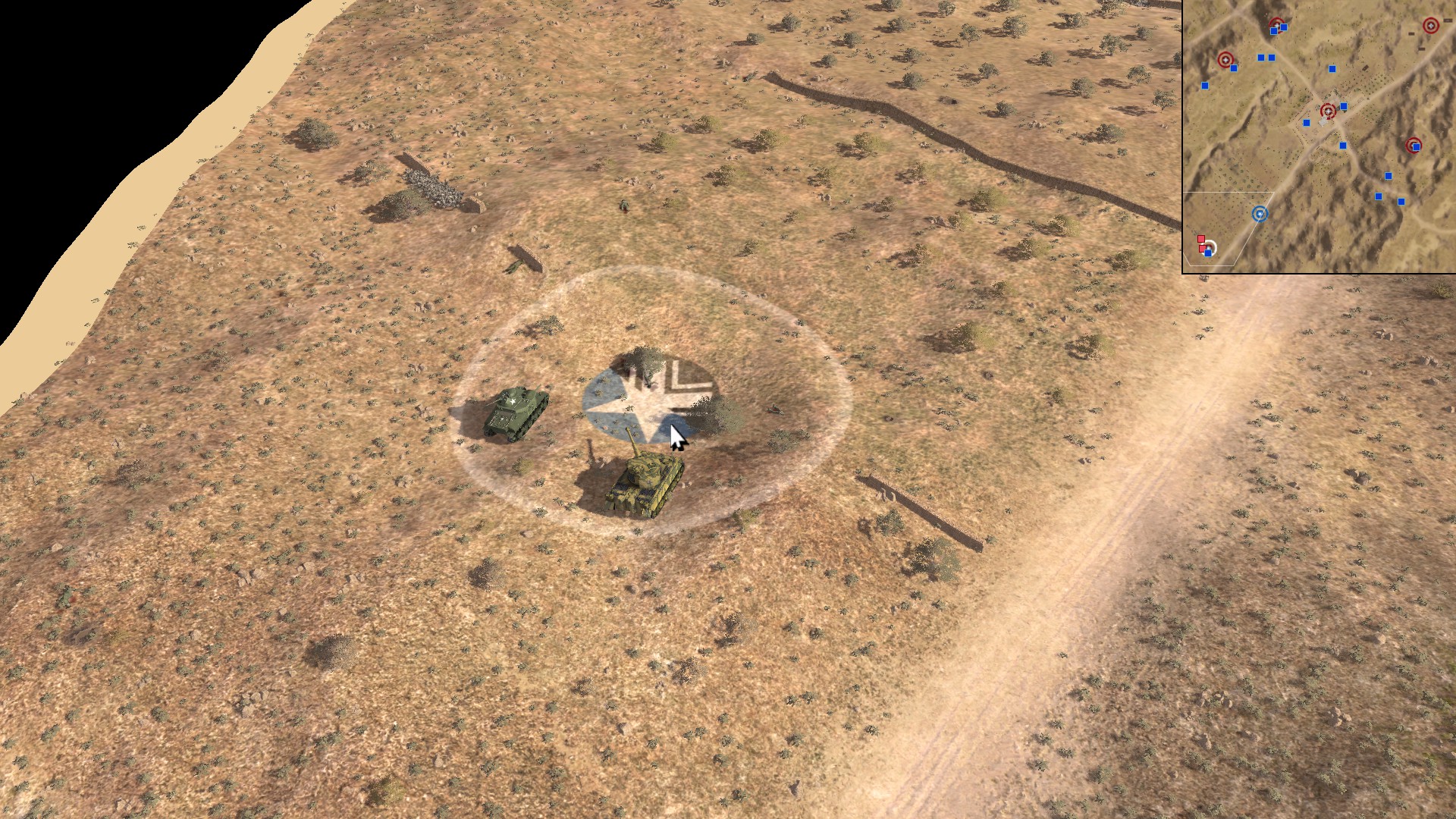Will we ever stop gaming World War II? Highly unlikely, since only World War III would eclipse it in scope and interest – and it’s generally assumed that we wouldn’t survive it. Thus it still remains at the forefront of gameable conflicts. And that is why we can get the first brand-spanking-new Close Combat title in decades – Close Combat: The Bloody First.
“The Bloody First” is one of the monickers of the 1st Infantry Division of US Army (the other, more famous one being “The Big Red One”). So it logically follows that the game is centered around 1ID’s adventures in various theaters of World War II. To be specific, you will take it from its first fights in Africa through the invasion of Sicily to Normandy (but no further than Operation Cobra). You will be playing the eye in the sky that commands a nameless company drawn from BRO. Try not to get everyone killed.
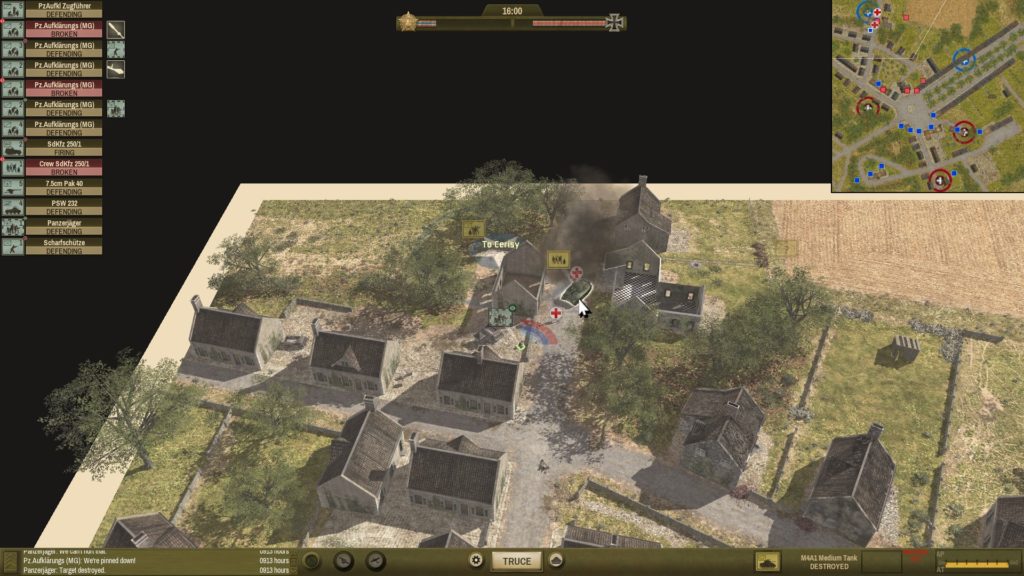
Where are we going to be fighting at?
Let us get some things out of the way: while Tunisia and North Africa are among the somewhat more popular WWII campaigns to play, they’re not as boring and played out as Normandy. Everyone is sick of the landings (you bet your regulation-issue ass it’s in the game), the bocage and the rest. Even my girlfriend – who’s not into history or videogames – thinks it’s the least interesting of theaters. However, 1ID is probably the most famous of American divisions: when you’re out to restart the series, you probably don’t want to risk it by setting in a less well-known place and time.
I should also note that Sicily is probably the most interesting of the operations in the game, as you don’t fight in Italy that often – and when you do, it’s usually in the mainland portion of the country. It’s an important chapter in the history of the BRO, as it was the place that saw some of the bloodiest fighting the division would go through.
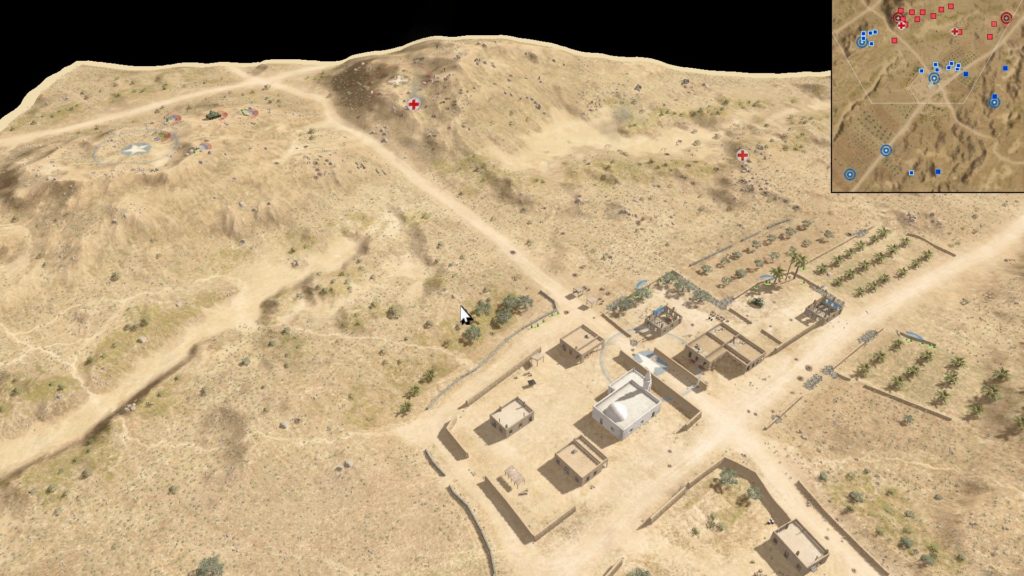
TO&E of Close Combat: The Bloody First
But back to the combat of the close type. Throughout its history, Close Combat followed one successful formula. The basic unit you control is a (fire)team. That means your regular US squad – 12 corn-fed patriots – is broken down into a 6-man BAR section (provides pew pew) and a rifle section (does maneuver). An Italian garrison squad would be broken down into a 4-man MG section and stonking-huge 8-man rifle section. Of course, the game doesn’t track which teams belong to what squad in the field, and neither does it model a chain of command, so everyone is free to run around freely.
Once you have your fellas on the field, you set up them in whatever deployment area you have. The AI will have done the preliminary work for you, but it doesn’t know what it’s doing, so you’ll have to do everything yourself. You can even give the first orders in this mode so that you’d have your force sally forth in a semi-cohesive manner.
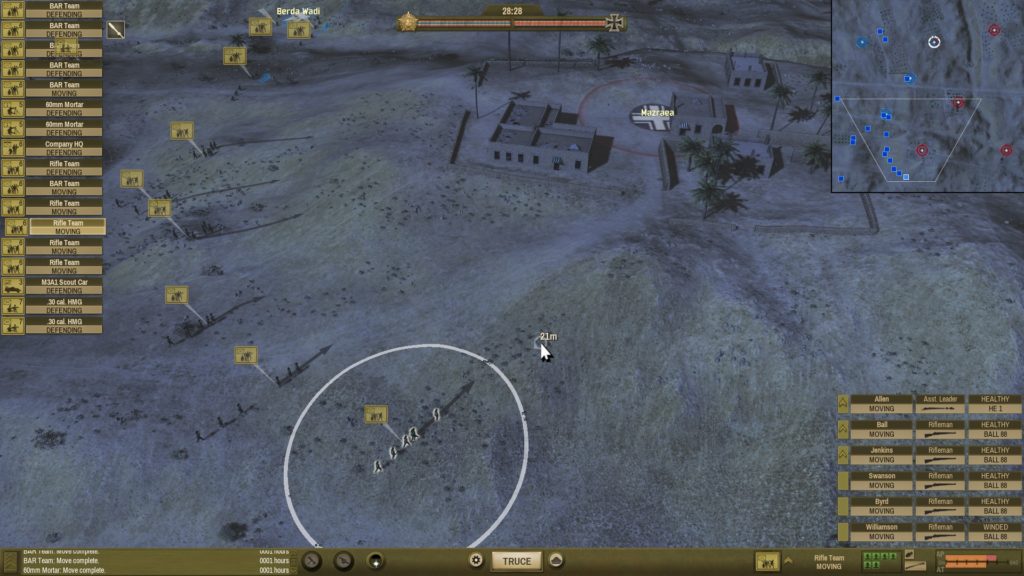
And one, two, three/ What are we fighting for?
In Close Combat: The Bloody First – like in other Close Combat games – you’ll be fighting over victory locations. They’re doubly important in campaign and operations (chibi campaigns of only a few maps) as victory locations increase your deployment area if you have to fight on the same map again. Just have more troops in that zone than the enemy and you’re gold (and seeing how small those locations are, you can’t really play hide and seek). The game ends after the timer runs out or the morale of one of the armies collapses. You might even nab (or lose) a victory location in the post-game!
When you’re in the field, you command your units via the order menu, which has always been one of the stand-out features in the Close Combat series. Select a unit, find a target location, click there and the menu will pop out (alternatively, it can pop out on the unit itself). Select whatever option you need and the troops will carry out your order. Note that troopers in the game are somewhat dumber than your usual RTS fare, so a “fire” order will only work if the enemy is within Line of Sight. The troops won’t move into a position to get a better firing solution, nor will they pursue a unit.
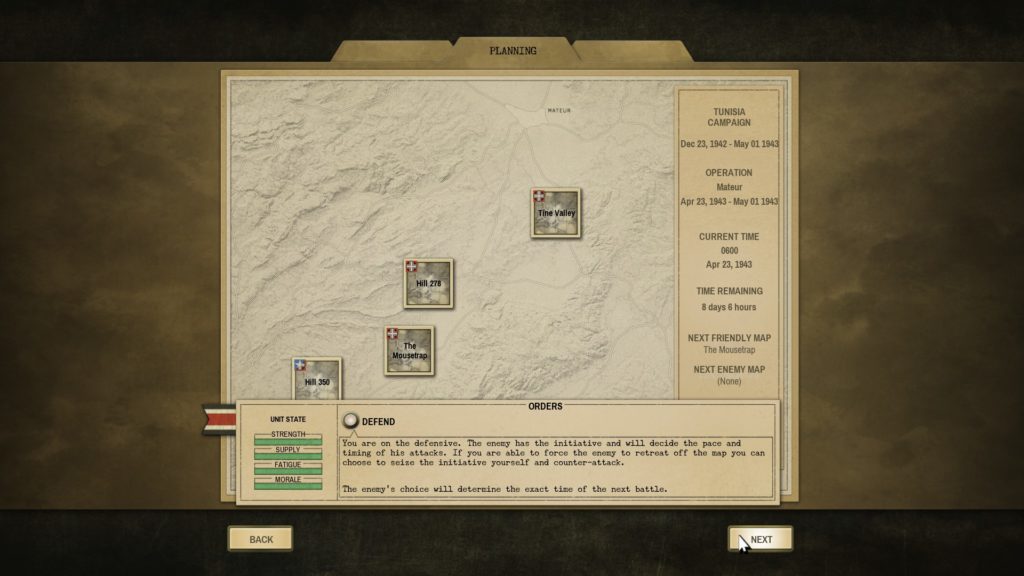
Then again, when you consider the nature of fighting in Close Combat: The Bloody First, it’s probably for the best. Any infantry out for a leisurely stroll will get cut down in a hail of rifle and MG fire (especially when Axis seems to consider “MG in every team” a priority barely lover than Lebensraum). So your dudes having about as much initiative as Evil Genius’ goons makes sense.
The order system is easy to understand. Eventually, you’ll only be limited by the game engine. Sometimes, you won’t see soldier silhouettes pop up for a move order, which means that the team can’t find a path there for some reason. You have to issue the order again after moving your cursor a pixel or two to the side. What the game could really explain better/at all is the fact that mortars will sometimes refuse to shoot because they don’t have a “clear shot,” which is odd for a weapon often used to bomb targets out of LOS. Tanks will complain of “steep angles” and “bad shots,” which are entirely mysterious conditions.
See a Nazi, shoot a Nazi
Other than that, going from 2D to 3D doesn’t complicate the battlefield that much. Things that give cover and concealment are easy to spot, LOS – easy to check. Buildings are abstracted, to the point where they’re usually just a room (or rooms) on the first floor. Infantry phases into buildings through walls and shoot through the windows, which can lead to certain problems, like MG crews in Omaha Beach being too dumb to stick their gun out of the bunker window.
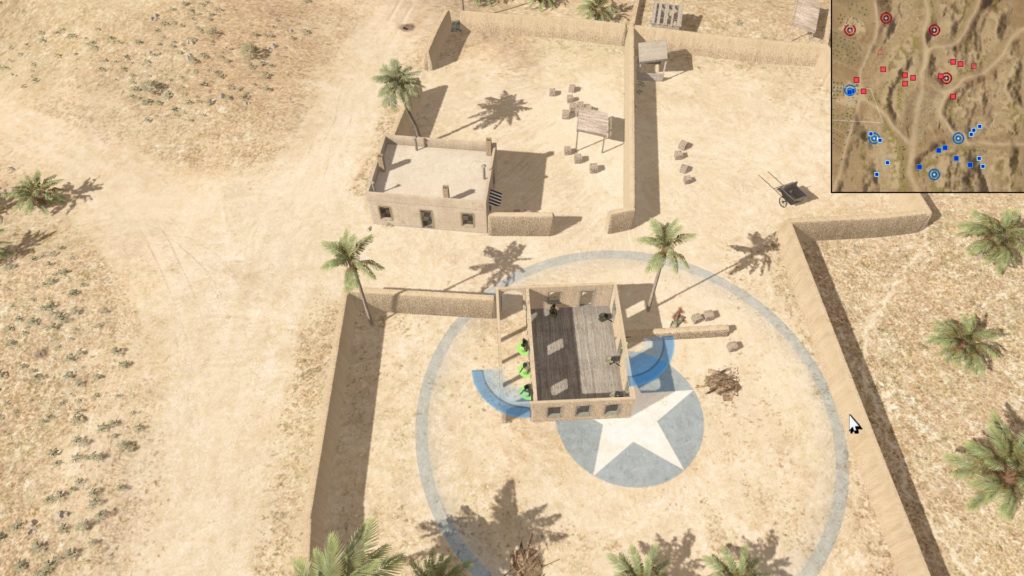
In general, Close Combat: The Bloody First is good at depicting the dynamics of combat. Most bullets won’t hit anyone, but that’s OK, since they’re suppressing enemies. Make an enemy squad panic, and they’ll retreat or start doing the CC trademark headless wandering around the map. And once the enemy is fixed in position, drop mortars on them. After all, mortars don’t care about any pesky cover getting in the way. At the same time, you have to accompany tanks with infantry, since armored vehicles aren’t the best at spotting enemies while the grunts are quite adept at least tracking the steel beasts.
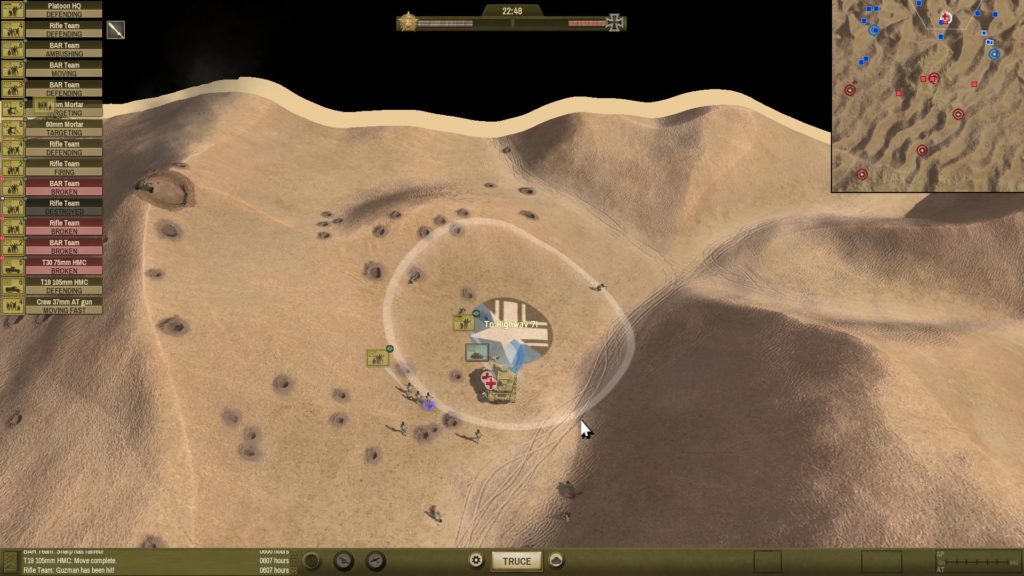
That and Panzershreck ambushes are satisfying to carry out.
Coffin for Seven Brothers (Who Died of Old Age)
Tank vs. tank battles are not, however. They would be decisive if not for the fact that tanks keep missing… a lot. Even a Tiger I can have issues with M3 Grants as it just can’t hit them. But maybe that’s part of the plan, as Tiger Is are nearly immortal and can solo the mission if you’re playing the scenarios as Germans.
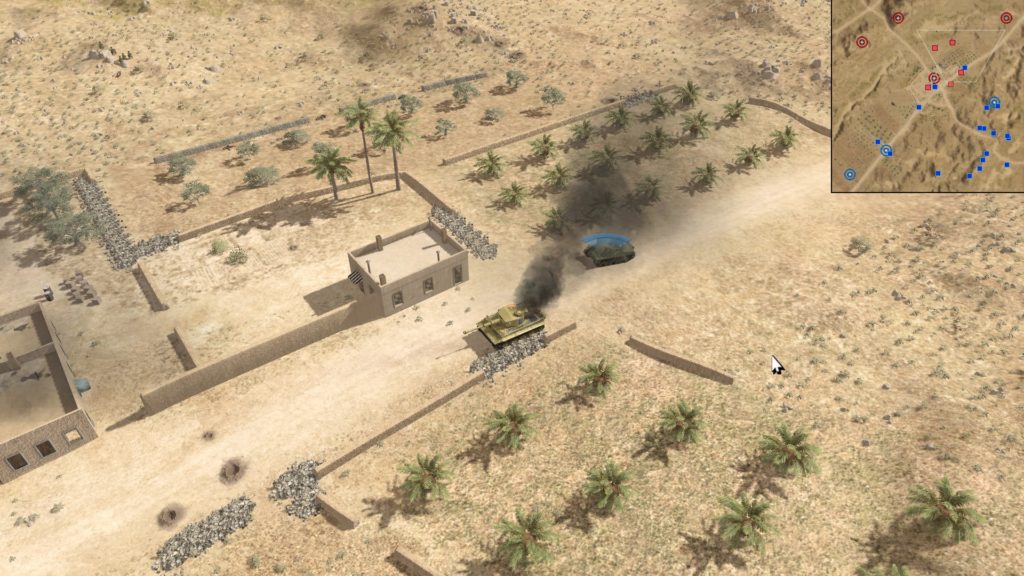
Granted, Close Combat: The Bloody First isn’t about 1. Infanteriedivision, so the campaign is focused on The Big Red One and the scenarios are balanced with player-controlled Americans in mind. This is quite obvious, as playing those scenarios as Germans (or Italians, as it sometimes happens) is a relative breeze.
They were dirty and they stank
However, leading a company of the BRO is the real experience. Your pool of troops will be somewhat static. That is, you’ll draw your Main Force of 9-14 teams from a crew that carries over from battle to battle. Your support options (usually up to 3) will be drawn from various units attached to 1ID and their lives will be somewhat… cheaper in your regard.
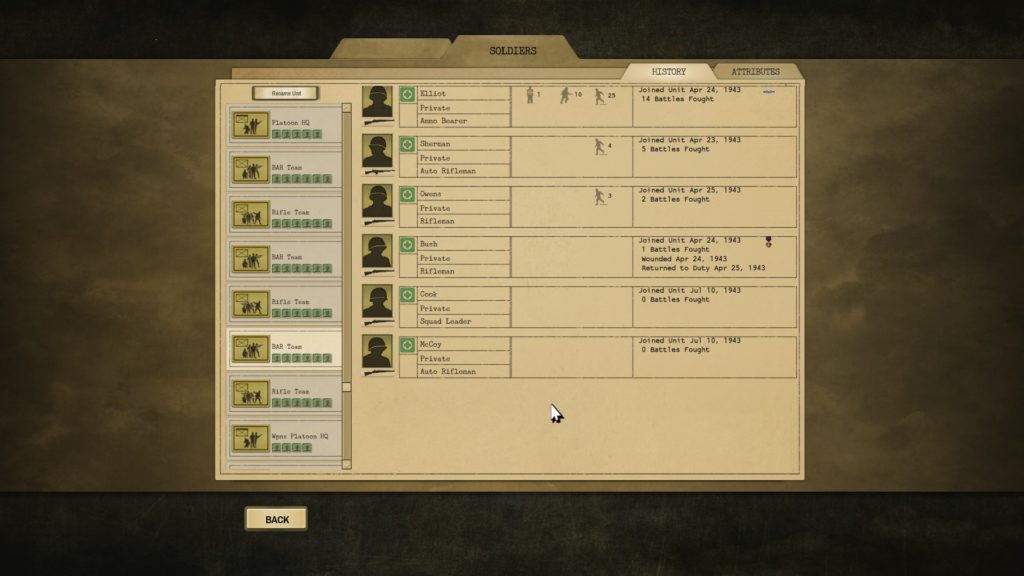
Incidentally, that’s how it works in the scenario editor. You assign one of the available companies for the player to choose from (you can’t edit the list) and they’ll get the full TO&E. Support options aren’t grouped in any way, so what you get will be sorely the purview of the editor. Fire Support (air strikes, off map artillery) are mysterious, as they’re boxes to tick in the editor. So air support may be a strafing run, or maybe a very precisely delivered bomb.
In Close Combat, each soldier has stats and they will change depending on their experiences on the battlefield. The one you’ll notice the most is morale. Units that spend a lot of time in the fighting (that is, participating in missions) will see it erode to the point where even your elite soldiers will rout after a single shot goes their way. That’s why it’s best to leave some of the troops on the bench to rest and relax and throw some never dudes into the grind.
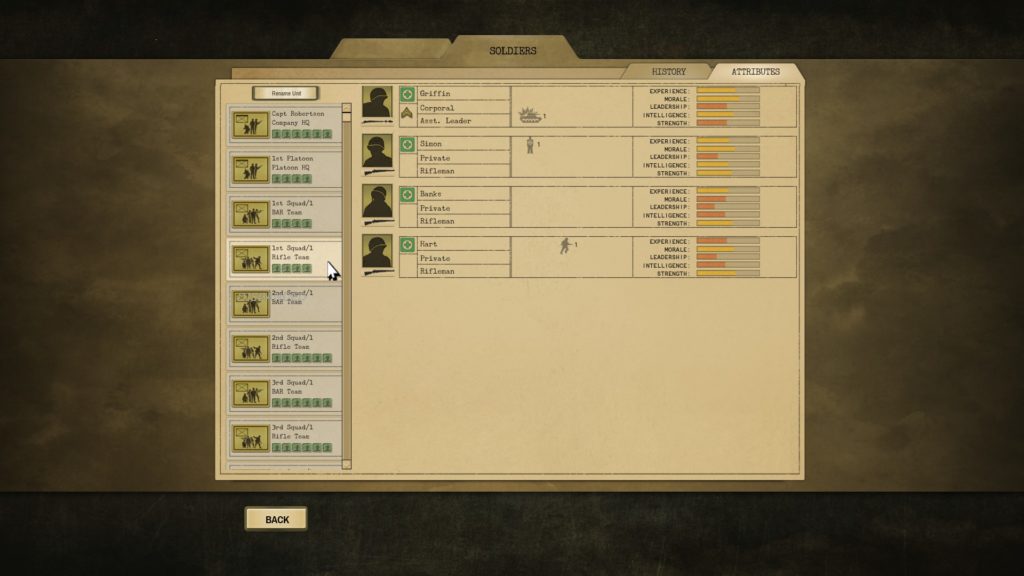
Soldier stats will also show how many battles they participated in, their kills, heroic instances and routs (this will probably be the largest number). They may even get awards! As the campaign goes, the Unit History tabs can help you see a picture of how mauled your company is getting, as you’ll be seeing guys in a single team with a difference in battle counts in the 10s. You may end up only having a single dude left from the first battle, with others being reinforcements brought in along the way.
Repple depple blues
Unless the unit gets wiped out, that is, in which case you won’t be getting it back, ever. Even if every guy was wounded, not killed, the system will treat it as destroyed. And sticks with you for the campaign. A mauled team that hasn’t been disbanded will be replenished between operations, but the other loses are permanent. Which is extremely unfair, since you’re already fighting against an AI that doesn’t have to worry about casualties past this battle/operation. It’s an inexplicable decision on the dev part.
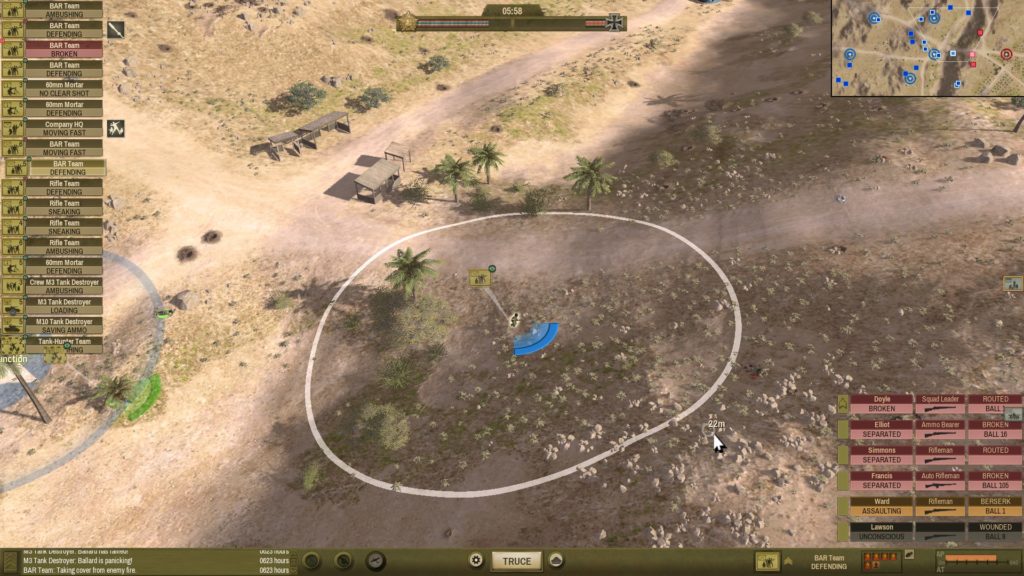
One other thing about selecting troops. Each company has a pool of “upgrades.” Some of them are common doctrinal practices, like splitting off some dudes to form a tank-hunter team or assign a sniper. Other times, it’s the ability to hand one team a rifle-grenade launcher or an additional LMG. Since CC is a tactical combat game about humans fighting humans, it allows you to differentiate between one formation of Panzergrenadiers and another.
An officer with a map
Now, the size of your army is determined by the size of the map. The smallest one only allows you to bring 9 main force units. Problem is that those smallest of maps can feel like a knife-fight in a phone booth. There’s a Tunisia map – Hill 350 – that’s just two roads separating three steep hills. What ends up happening is the sides deploy very closely together and the massive slaughter at the start of the match decides the victor. This is also the only Africa map that I explicitly remember featuring Shutzenkompanie, which gives MGs to every other team. Perhaps it would have been unwinnable otherwise?
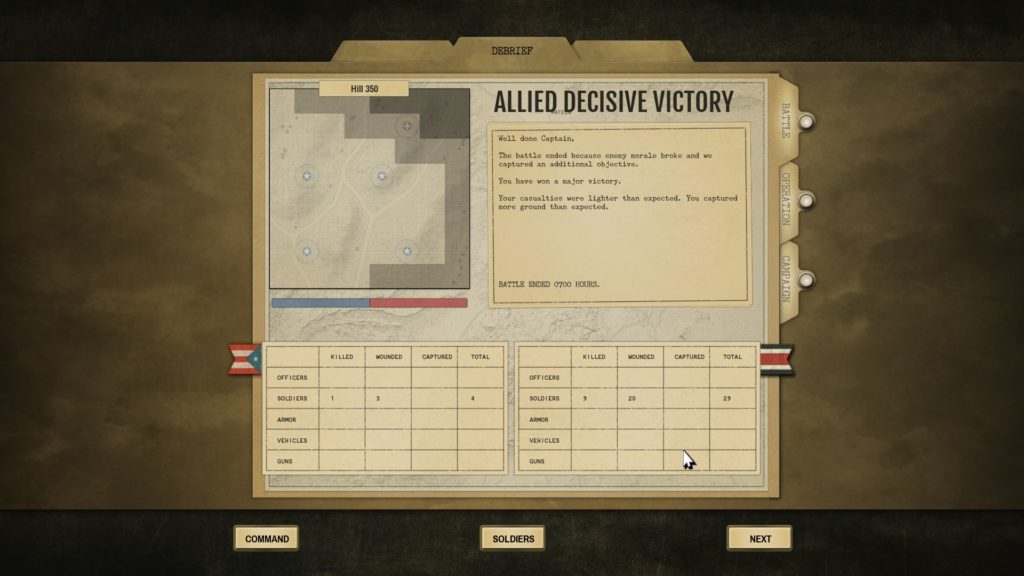
The larger maps are pretty great and some of the smaller ones can feature better designs as well. Tunisia is probably the campaign with the most open area, allowing for long-range firefights. Sicily features much rougher terrain than – and a lot more greenery that gets in the way. Normandy is… well, Normandy. It’s bocage all around – and some of the heaviest urban maps.
For the love of God, don’t read “Deathtraps!”
All things considered, Close Combat: The Bloody First looks decent enough. The UI will hardly woo anyone, but the bird’s eye view of the maps is good. And so is the action! Your soldier milling around like ants, bullets going every which way, explosions going off here and there, and even tiny red crosses floating in the air indicating a fresh casualty are all cool. Just don’t zoom in too close, as that’s when the models start showing their flaws. Unfortunately, my favorite model of the Sherman – the M4A1 – looks ugly no matter the distance.
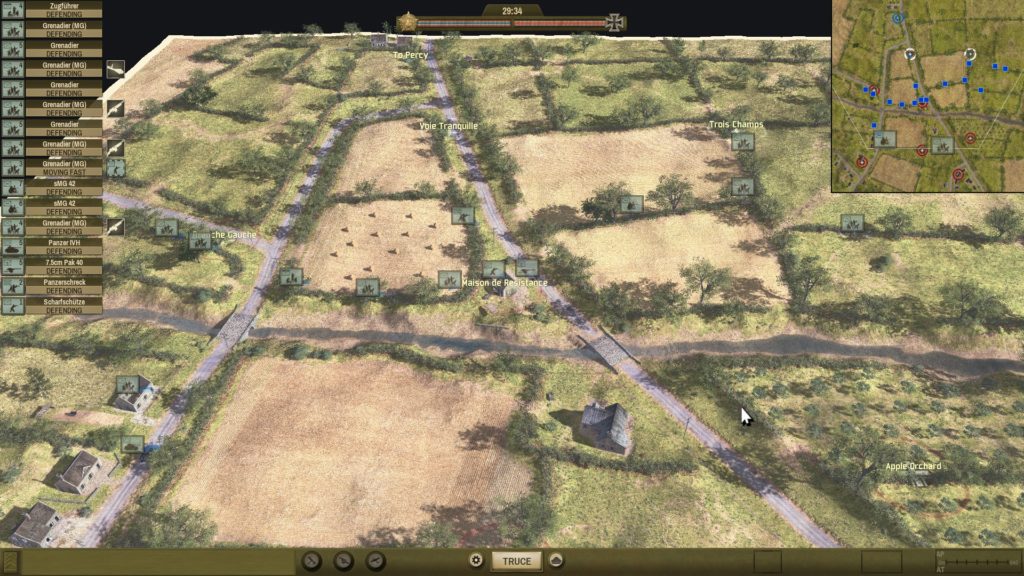
The sound work is decent. There aren’t too many tracks, but the ones that exist don’t get boring – possibly because they don’t play during the action. However, European deployments have this extremely sad (or bittersweet) accordion theme that almost makes me too sad to play. But when the music stops, you get to hear all the sounds of battle, and you will learn to fear the German MG34s and 42s by sound alone. You’ll also learn to hate the unit barks for rallying or panicking, as crews of tracked tanks will be undergoing this cycle endlessly and way too often.
Close Combat: The Bloody First does a decent enough job of transitioning the series into the 3D realm. However, it’s several patches away from greatness. I don’t know if tanks can be easily remedied, but having disbanded teams replaced at least when moving from theater to theater is a must. I just hope it all gets solved for a 3D title set on the Eastern Front.
There has to be a new Close Combat on the Eastern Front!

